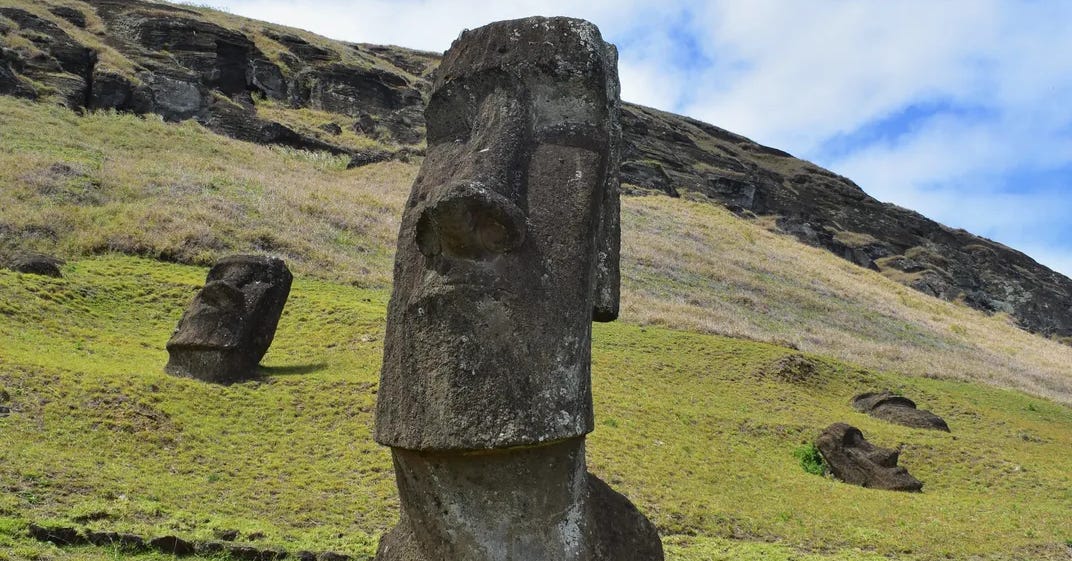For a long time I was under the impression that Easter Island had a culture that collapsed dramatically when the island was deforested sometime before it was discovered by Europeans in the late 18th century.
The estimates were that the population collapsed from about 25,000 to two or three thousand, because the allegedly ignorant islanders committed “ecocide” and burned up all their trees.
Does this sound familiar? Because to me it sounds a lot like the climate change narrative fed to us by the transnational deep state aka Mr. Global aka the G3P, namely that we must be saved from ourselves by a world government that will control us with CBDC’s and so called vaccines in order to prevent us from ecociding ourselves.
But lo and behold, it turns out that there may have been no such dramatic collapse on Easter Island, and that the population was fairly stable from the time of its settling by Polynesians to its discovery 800 or so years later by Europeans. “As such, scientists suggest the island’s population didn’t experience a dramatic drop-off. It was just small to begin with”, according to an article from the uber mainstream Smithsonian Magazine.
So maybe it turns out that another one of Mr. Global’s ghost stories has been constructed entirely of bovine excrement. It kind of makes you want to go out and topple some Moai.




Ha ha! Yes, and it's a fiction I fell for many years ago. I even read the novel "The Stone Gods" by Jeanette Winterson, although I had enough discernment to see that as laboured and pretentious. Pity I didn't question the whole "cautionary tale" baloney much sooner, but I was one of the true believers.
https://en.wikipedia.org/wiki/The_Stone_Gods_(novel)
from https://en.wikipedia.org/wiki/Tupaia_(navigator)
"Tupaia joined Endeavour in July 1769 when it passed his home island of Ra'iatea in the outward voyage from Plymouth. He was welcomed aboard at the insistence of Sir Joseph Banks, the Cook expedition's official botanist, on the basis of his evident skill as a navigator and mapmaker: when asked for details of the region Tupaia drew a chart showing all 130 islands within a 2,000 miles (3,200 km) radius and was able to name 74 of them."
His maps included Rapa Nui, Easter Island.
Tupaia started back to England with Cook. He died a year later in Batavia from illness. It would have been interesting had he lived and got to England and learned English and wrote about his life, which he surely would have done.